The Best Layered Cuts for Curly Hair: A Guide to Volume, Shape & Definition | Unlock Your Curls
Unlocking Your Curls: Why a Layered Cut is a Game-Changer
For those blessed with natural curls, the journey to finding the perfect haircut can feel like a lifelong quest. Curls have a mind of their own, and a one-size-fits-all approach simply doesn’t work. This is where the magic of layering comes in. The right layered cut can transform unruly, shapeless curls into a masterpiece of definition, volume, and movement. If you're searching for the best layered cuts for curly hair, you've come to the right place. This comprehensive guide will explore how strategic layering can solve common curly hair woes, from the dreaded "triangle head" to limp, weighed-down spirals, helping you finally achieve the hair of your dreams.

Layers are not just about removing length; they are about sculpting and architecture. For curly hair, this is paramount. By removing bulk in specific areas, a stylist can allow individual curl families to spring to life, creating a beautifully balanced and harmonious shape. This post will delve into the most popular and effective layered cuts, from the retro-chic shag to the modern wolf cut, and explain specialized techniques like dry cutting that are essential for a flawless finish. Get ready to embrace your texture and discover the perfect layered silhouette for your unique curls.
Why Layers are a Curly Girl's Best Friend
The fundamental reason layers work so well on curly hair is physics. Curls are coils, and when they are all one length, the weight of the hair pulls them down, stretching the pattern and often creating a flat top with excessive bulk at the bottom. Layers systematically remove this weight, allowing each curl to live up to its full, bouncy potential. This strategic weight removal is the key to creating volume where you want it (at the crown and throughout the body of your hair) and reducing it where you don't (at the ends).

The Science of Spring: How Layers Enhance Curl Patterns
Think of each curl as a tiny spring. When you place weight on top of a spring, it compresses. The same happens with your hair. The top layers of hair weigh down the layers underneath. By cutting shorter layers on top and gradually longer layers beneath, a stylist effectively frees each spring from that weight. This allows your natural curl pattern—whether it's a loose wave, a tight coil, or something in between—to contract and form its true shape. This results in enhanced definition, better curl clumping, and a significant boost in overall volume and movement.Banishing the "Triangle Head": Achieving Balanced Shape
Perhaps the most feared outcome of a curly haircut is the infamous "triangle" or "pyramid" shape, where hair is flat at the roots and expands into a triangular mass at the ends. This is a direct result of a single-length cut on curly hair. Layers are the antidote. An experienced stylist will use layers to build a rounded, more flattering shape that complements your head shape and facial features. By adding layers throughout the crown and mid-lengths, they create lift at the roots and distribute the volume evenly, resulting in a beautifully sculpted silhouette that moves with you.The Classic Shag: Effortless Texture and Volume
The shag haircut, a 70s rock-and-roll staple, has made a massive comeback, and it’s particularly stunning on curly hair. A modern curly shag is all about embracing natural texture with heavily layered sections, creating tons of movement and a lived-in, effortless vibe. The cut typically features shorter layers on top and around the crown, with longer, thinned-out layers toward the bottom. Often paired with a curly fringe or bangs, the shag is a statement look that is both edgy and soft.
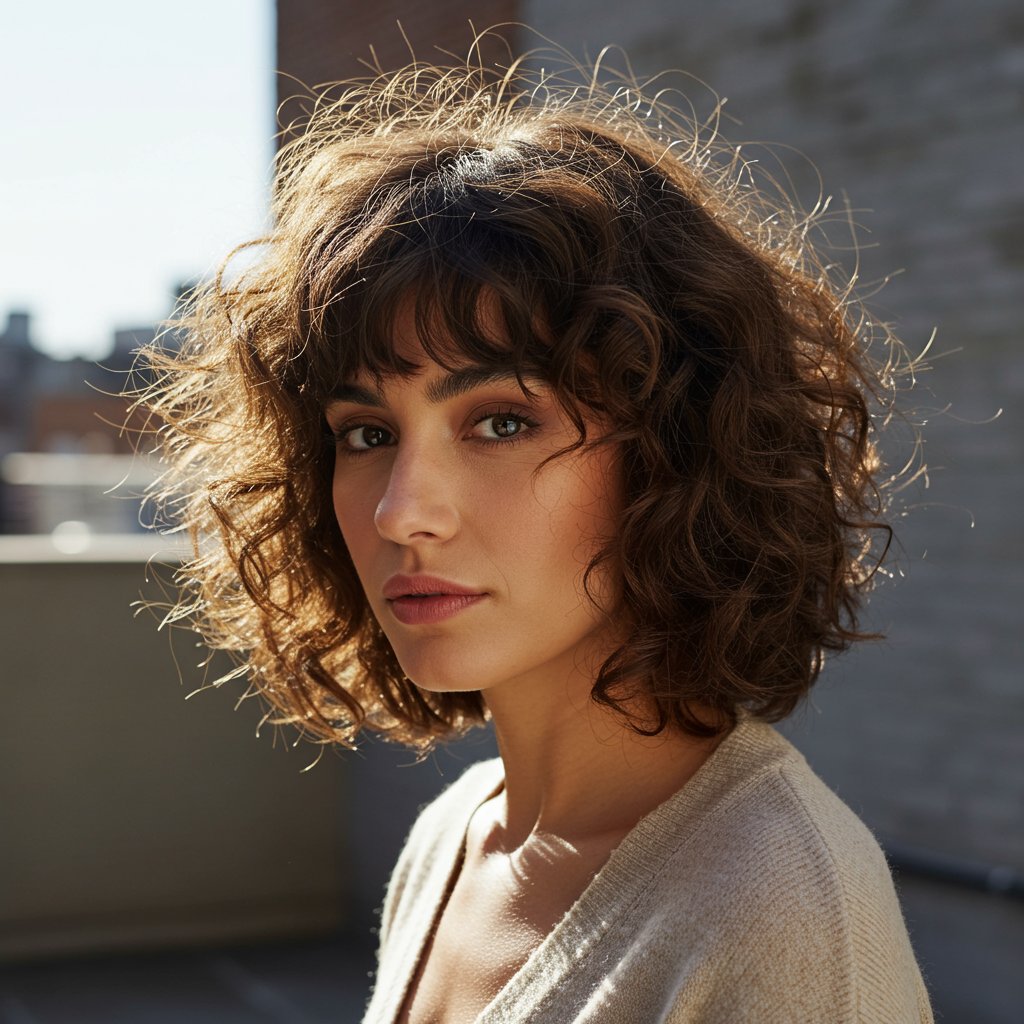
Who It's For: Best for Medium to Thick Hair
This cut is a dream for those with medium to thick hair density and a curl pattern ranging from 2b waves to 3c curls. The extensive layering helps to debulk thick hair, making it feel lighter and more manageable. The shorter layers on top are perfect for creating lift and volume at the root, something many curlies struggle with. For those with finer hair, a modified shag (or a "shullet") with fewer, longer layers can work, but the classic heavy layering is best suited to support itself on denser hair types.Styling the Shag: Embrace the "Wash and Go"
The beauty of a curly shag is its low-maintenance styling. It’s designed to look a bit undone and wild. To style, apply a curl cream or mousse to wet hair for definition and hold. You can either air-dry or use a diffuser, scrunching the hair to encourage volume and texture. A texturizing spray or sea salt spray can be used on dry hair to enhance the piecey, separated look of the layers and refresh the style on day two or three.The Wolf Cut: The Shag's Edgy Cousin
If you love the texture of a shag but want something with a bit more edge and drama, the wolf cut is your answer. This hybrid style combines the heavy layers of a shag with the shorter-in-front, longer-in-back structure of a mullet. The result is a wild, voluminous style with a distinct shape that has taken social media by storm. On curly hair, the wolf cut creates an incredible amount of volume at the crown and a tapered, wispy look towards the ends.
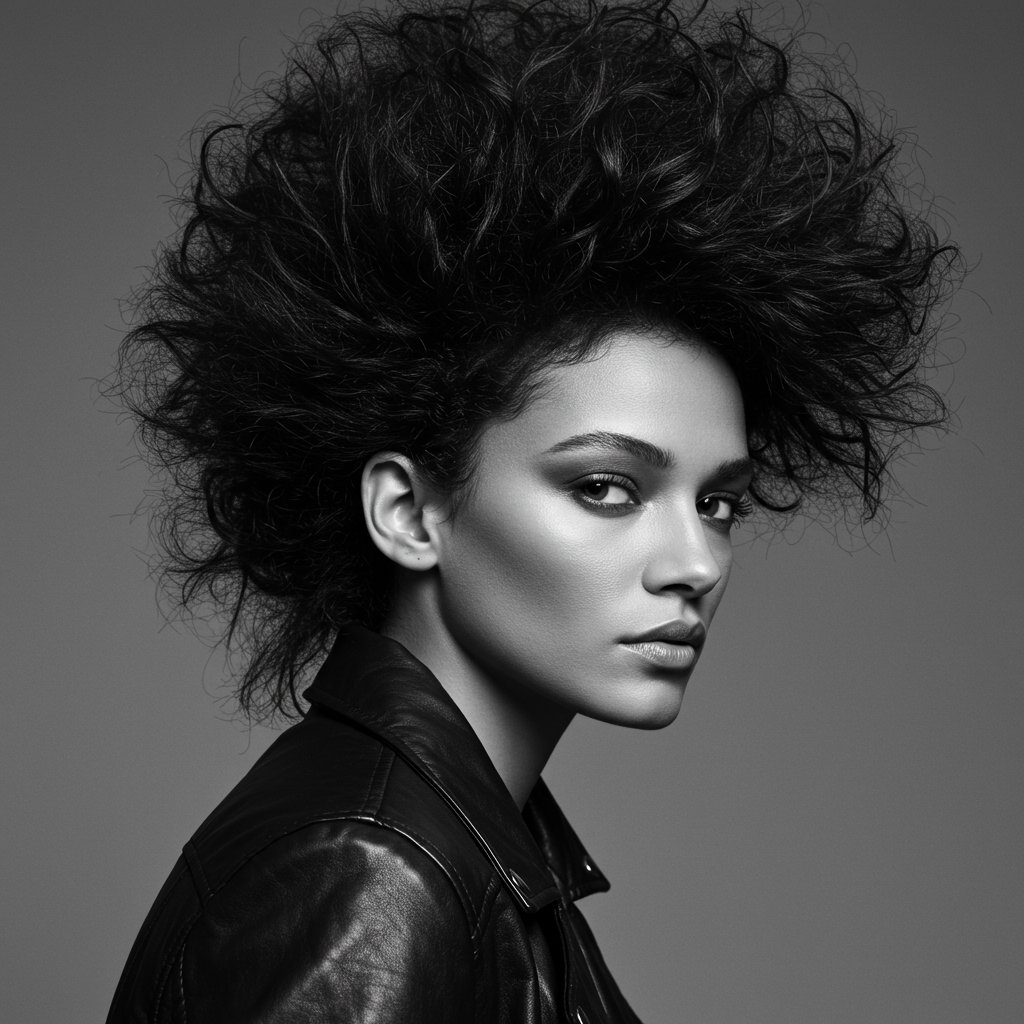
The Anatomy of a Curly Wolf Cut
The key to the wolf cut is the dramatic difference in length between the top and bottom layers. The hair around the face and on top of the head is cut into short, choppy layers to create a voluminous, almost fringe-like effect. As the layers move toward the back, they become progressively longer, creating a mullet-esque flow. This intense layering is what gives the cut its signature "wolf-like" mane and makes it so dynamic on curly textures.Is the Wolf Cut Right for Your Curls?
This bold cut works best on those with a strong curl pattern (3a to 4a) that can support the heavy layering on top without looking sparse at the ends. It's a fantastic choice for anyone looking to make a statement and add significant volume to the top of their head. It beautifully frames the face and accentuates cheekbones. However, because it's such a specific shape, it’s crucial to find a stylist who understands how to execute it on curly hair to avoid a disconnected or uneven look.The Layered Bob: Chic, Timeless, and Versatile
A bob is a timeless classic, but for curly hair, layers are non-negotiable to make it work. A layered curly bob prevents the dreaded "bubble" effect by introducing internal movement and shape. This cut can range from a chin-length French bob to a shoulder-grazing long bob (or "lob"), and the layering can be customized to be soft and subtle or bold and choppy. It's a chic and sophisticated option that is surprisingly versatile for curly textures.
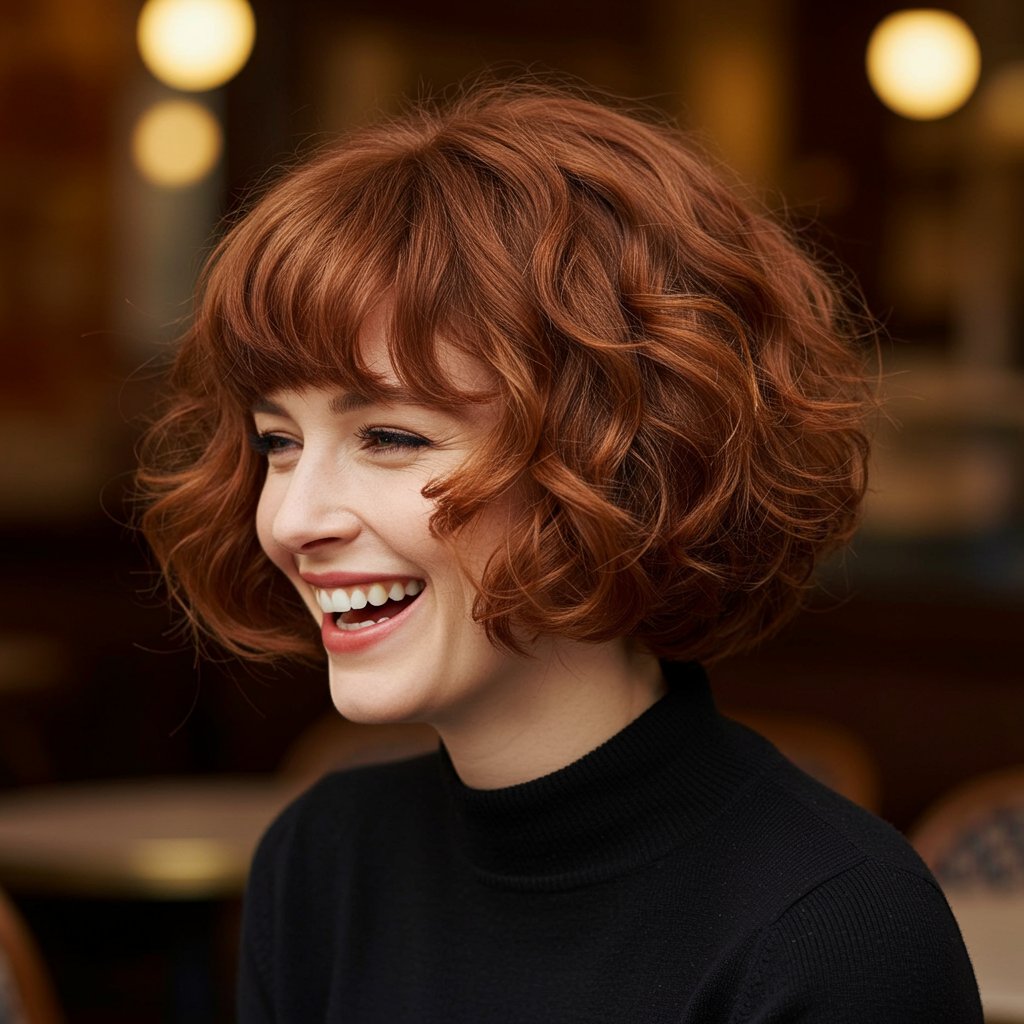
The "Lob" (Long Bob) vs. The Classic Bob
A classic, chin-length curly bob is playful and bold, drawing attention to the jawline and neck. Layers are essential to create a rounded shape and prevent the ends from puffing out. A lob, which falls somewhere between the chin and collarbone, offers a bit more styling versatility. It provides enough length to tie back while still feeling light and bouncy. For both styles, round layers or stacked layers in the back can help create a beautiful, graduated silhouette.Invisible vs. Visible Layers
When discussing a curly bob with your stylist, you might hear the terms "invisible" or "visible" layers. Visible layers are more traditional, creating obvious texture and separation within the hair. Invisible layers, or internal layers, are cut underneath the top surface of the hair. This technique removes bulk and adds movement without disrupting the overall shape, making it a great option for those with very thick hair or who want a smoother, more uniform finish to their bob.The Deva Cut and Other Dry-Cutting Techniques
More important than the specific style of cut is the technique used to achieve it. For curly hair, dry cutting is often considered the gold standard. Unlike a traditional wet cut, where hair is pulled taut and cut uniformly, a dry cut allows the stylist to see how each curl naturally falls and clumps together. This enables them to cut the hair curl by curl, sculpting it according to your unique pattern and desired shape. This method prevents surprise shrinkage and ensures the final look is perfectly balanced.

What is a Deva Cut?
The Deva Cut is the most well-known dry-cutting technique. A Deva-certified stylist will cut your hair completely dry, in its natural state. They sculpt the hair by cutting individual curls at an angle that enhances their shape and reduces frizz. This bespoke approach ensures that the layers work in harmony with your curl pattern, not against it. It's a transformative experience for many who have only ever had their curls cut wet.Other Dry-Cutting Methods (Rezo Cut, Ouidad Cut)
While the Deva Cut is famous, it's not the only specialized curly technique. The Rezo Cut, for instance, focuses on creating both shape and volume, aiming for a rounded, even silhouette from every angle. It's great for those who want to maintain length while boosting volume all over. The Ouidad Cut uses a "carve and slice" method on wet hair to remove bulk and encourage curl clumping, which is excellent for those with very thick, dense curls. Researching these methods can help you find the technique best suited to your hair goals.Long and Luscious: Strategic Layers for Length
Many people with curly hair dream of long locks but fear that layers will mean sacrificing precious length. This is a common misconception. In reality, long, one-length curly hair can look heavy and shapeless, with the curls at the root being stretched out. Strategic, well-placed layers are the key to maintaining length while adding life, movement, and shape to long curly hair.
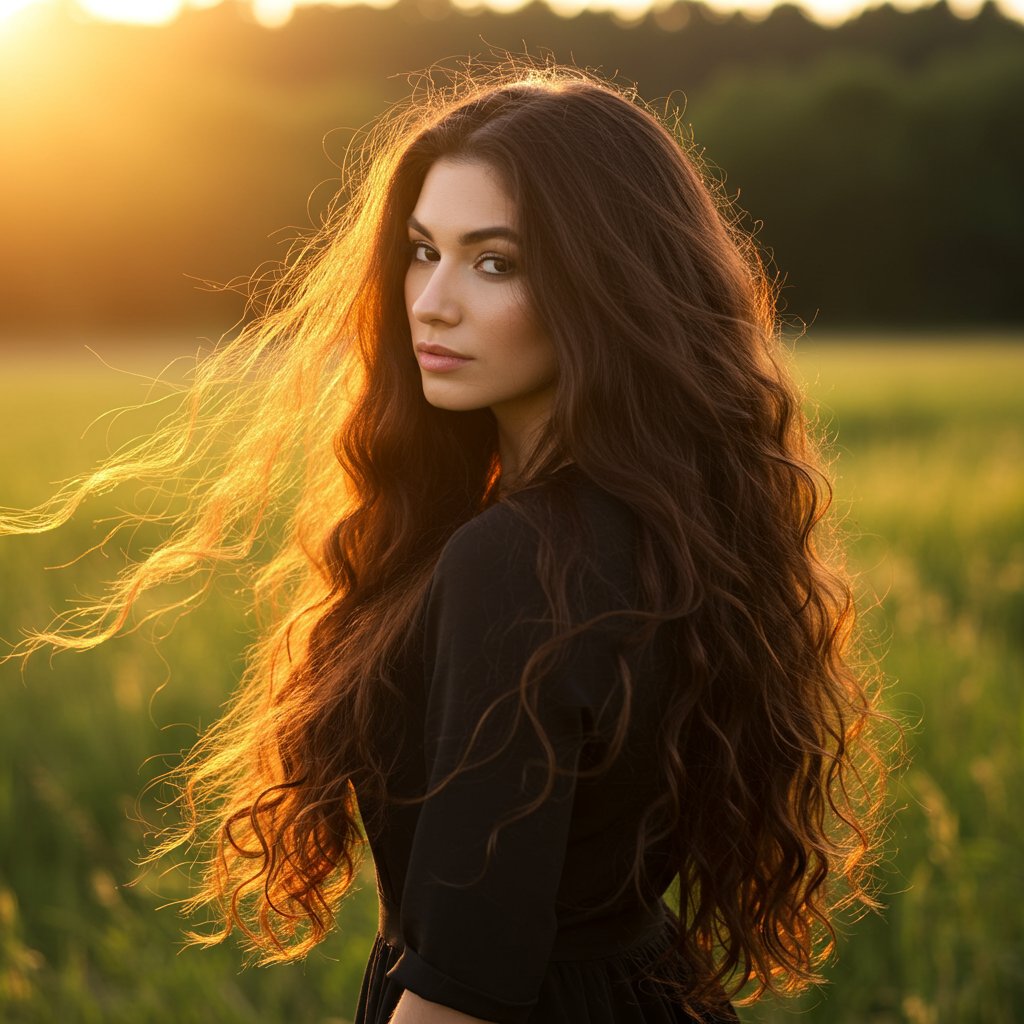
The Power of "Ghost Layers"
For those who are truly scissor-shy, "ghost layers" are the perfect solution. This subtle technique involves cutting fine, diffused layers internally throughout the hair, primarily in the mid-lengths and ends. From the outside, the hair appears to be one length, but these hidden layers remove significant weight, allowing the curls to bounce up and move freely. It’s the ideal way to get the benefits of layering without a dramatic change.Face-Framing Layers: The Perfect Accent
Another fantastic option for long hair is to focus the layering around the face. Soft, cascading face-framing layers can open up your features, highlight your cheekbones, and add a touch of style and personality without altering the overall length of your hair. These layers can start at the chin and blend seamlessly into the rest of your hair, creating a beautiful, soft contour that flatters every face shape.Pro Tips for Maintaining Your Layered Curly Cut
A great haircut is only the beginning. Proper at-home care and styling are essential to keep your layered curls looking their best between salon visits. The right routine will enhance your cut's shape, combat frizz, and keep your hair healthy and hydrated.
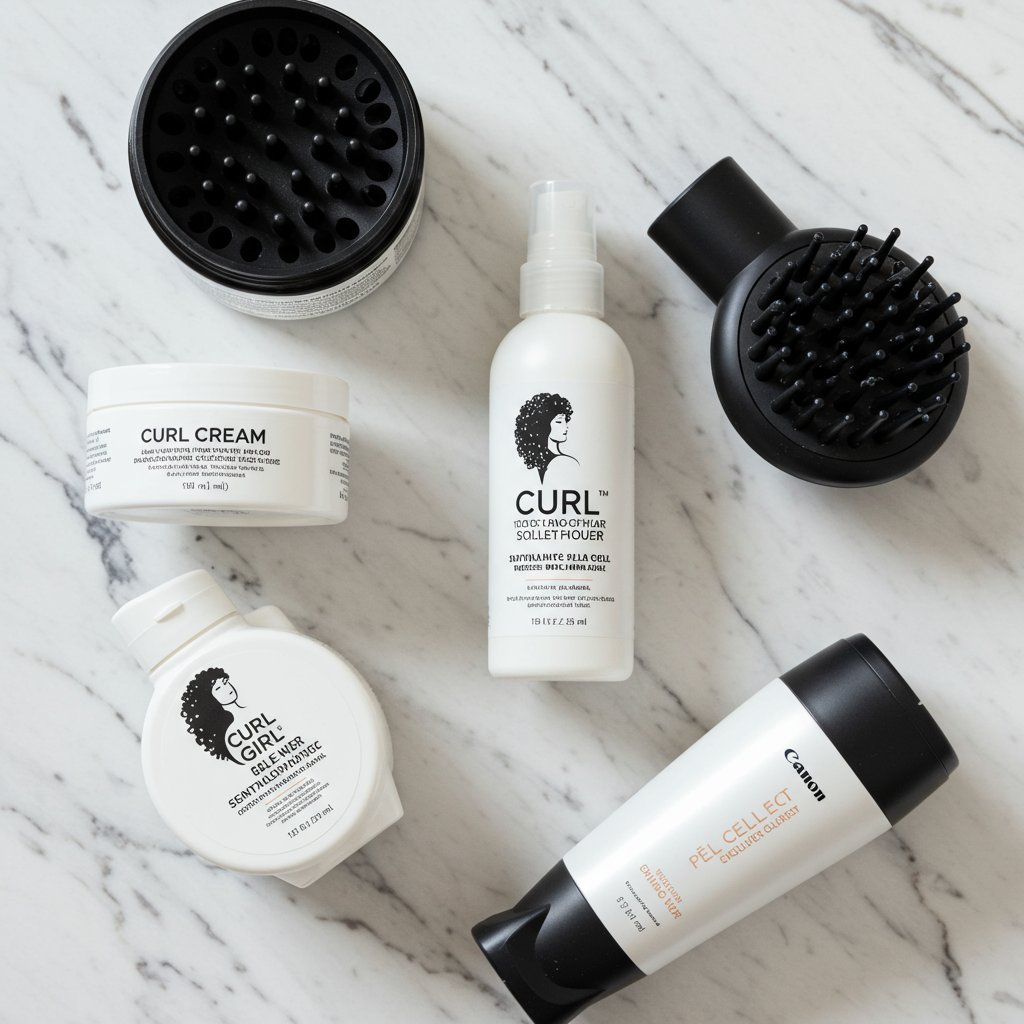
The Right Products Matter
Invest in high-quality, curly-specific products. Look for sulfate-free shampoos that won't strip your hair of its natural oils. A deeply hydrating conditioner is a must, as is a good leave-in conditioner to provide a base layer of moisture. For styling, experiment with what your curls love. A curl cream can provide soft definition, a gel offers stronger hold and frizz control, and a mousse can add lightweight volume. The products you use will directly impact how well the layers in your cut pop.Styling Techniques for Success
How you apply products and dry your hair makes all the difference. Apply your styling products to soaking wet hair to ensure even distribution and minimize frizz. Techniques like "raking" or using a Denman brush can help define curl clumps. To dry, try "plopping" your hair in a microfiber towel or t-shirt to absorb excess water without disrupting your curl pattern. When you're ready to dry, either air-dry or use a diffuser on low speed and low heat to gently dry your curls and enhance the volume created by your layers.Frequently Asked Questions About Layered Curly Cuts
Will layers make my curly hair frizzy?
When done correctly by a skilled stylist, layers should reduce frizz, not cause it. Frizz can occur if the layers are cut with a razor or if the technique isn't suited for curly hair. A proper dry cut or a precise shear cut will enhance curl definition and create a seamless blend, which helps control frizz.What's the difference between layers and thinning?
Layers are a structural cutting technique used to create shape, volume, and movement by cutting hair to different lengths. Thinning, on the other hand, is a technique used to remove bulk from the hair, often with thinning shears. While thinning can be part of a layered cut for very dense hair, it must be done with extreme care on curly hair, as it can disrupt the curl pattern and lead to frizz.Can I get layers if I have fine curly hair?
Absolutely! The key is to opt for fewer, longer layers. Heavy or short layering can make fine hair look sparse at the ends. Long, subtle layers (like ghost layers) can add much-needed movement and volume without sacrificing the appearance of density.How do I ask my stylist for the right kind of layers?
Bring pictures! Photos are the best way to communicate the style you're hoping to achieve. Use descriptive words like "soft," "rounded shape," "face-framing," "volume at the crown," or "subtle movement." Most importantly, have a thorough consultation and be open to the stylist's professional opinion on what will work best for your specific curl type and hair density.Are layered cuts high-maintenance for curly hair?
Generally, a good layered cut is lower-maintenance than a one-length cut because it's designed to work with your natural texture. It enhances your wash-and-go potential. The main maintenance is getting regular trims every 3-4 months to keep the shape fresh and the ends healthy.Can coily hair (Type 4) benefit from layers?
Yes, coily and kinky hair types can benefit immensely from layers! A layered cut, often called a "shape cut" or a Deva Cut for this texture, can create a beautiful, rounded afro or a tapered shape. It helps prevent the hair from looking boxy and allows each coil to be defined, creating incredible shape and dimension.Embrace Your Curls with the Perfect Cut
Choosing to get layers is one of the most empowering decisions you can make for your curly hair. It’s about more than just a haircut; it’s about embracing your natural texture and giving it the shape and freedom it needs to thrive. From the edgy wolf cut to the timeless layered bob, there is a perfect layered style waiting to bring your curls to life. The key is communication and collaboration with a stylist who truly understands the art and science of cutting curly hair.
By understanding the benefits of different styles and techniques, you can walk into a salon with confidence, ready to achieve the hair you’ve always wanted. A great layered cut will not only make your daily styling routine easier but will also help you fall in love with your beautiful, unique curls all over again. Consult with an experienced stylist to find the perfect layered cut for you and begin your journey to your best-ever hair.


